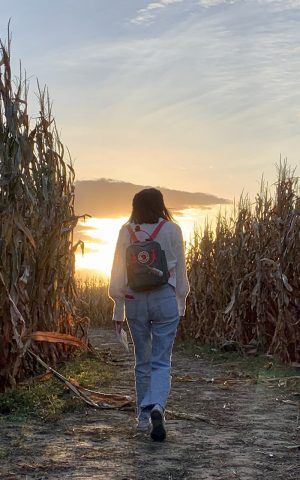Connection…Without the Classroom
November 3, 2020
There have been many changes to school this year. Students and teachers are adjusting to WebEx classes, and a new learning platform.
It can be difficult to stay engaged in class online.
“It’s easy to just turn off your camera and get on your phone and it takes a lot to refrain from doing that,” Junior Katherine Lawlor said.
Online learning is different for everyone, just like in-person.
“Real interaction with people motivates me more and puts me in a healthier state of mind,” freshman Presley Bialek said.
These changes affect everyone, students and teachers.
“Teaching on camera has been a bit of an adjustment. I’ve done some lessons where I write on the whiteboard, and trying to fit and line up everything can be a challenge. Writing with a stylus pen on the iPad has its ups and downs,” math teacher Brian Mills said.
While attendance is mandatory as always, students are not required to turn on their cameras when they log in for class.
“From my understanding there are multiple reasons for not requiring cameras in class,” ceramics teacher Elija Schraad said. “The reason that resonates with me the strongest is that students need to feel safe in their classrooms in order to learn. If your home life is not something that you want to broadcast to your entire class then requiring your camera to turn on would be horribly uncomfortable. If you are more focused on what people are thinking of you than what is going on in class, then you are not learning anything that day.”
Like many schools and businesses around the world, teachers are dealing with people joining WebEx meetings they’re not supposed to be in. This is mainly students purposely joining the wrong class, often disrupting the class.
“This has been an issue,” Shraad said. “I personally lock my meeting and have memorized my rosters. If you don’t have a name or I don’t recognize you then you don’t get into my class. I never have my meetings unlocked and I am quick on the expel button.”
Another big difference this year is that teachers are using Canvas for their classes rather than Google Classroom.
Opinions of the platform are mixed.
Lawlor prefers Canvas; “I like the organization [of Canvas] a lot more and I feel like it’s easy to navigate even though there are more tabs,” while Bialec prefers Classroom; “it’s so much easier and every google site connects to google classroom.”
Shraad says that there are benefits to both.
“From my understanding Canvas is more secure with student information and has a higher potential however with this potential also comes a greater challenge of creating content. The more I use Canvas, the better it feels and the more I prefer it,” he said.
Different types of classes may present unique challenges.
“One of the biggest challenges is helping students find an area where they can safely work with clay in my ceramics class,” Schraad said. “It is tough for students that live in small homes or are bouncing between homes through the week. Clay is one of those media that truly requires a studio to work with.”
Some classes may require specific equipment.
“In the art department we also had to order supply kits for every student. This would have been an impossible task if we didn’t have such a strong team of teachers,” Shraad said.
Many classes rely more heavily on in-person interaction than others.
“I think cadet has been a lot harder since the class is based a lot on personal and one-on-one interactions,” junior Katherine Lawlor said
Despite the changes and challenges, classes are being adapted to accommodate remote learning.
“One of the biggest ways we’ve adapted is using breakout rooms to work in smaller groups so people are more comfortable talking,” Lawlor said. “We also use the time together as a whole class to share personal stories and experiences that help the class feel more ‘normal’ and like we’re connecting and learning about each other more.”


